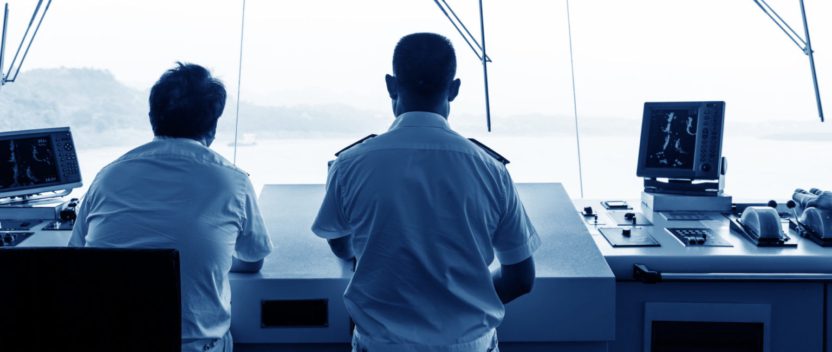Running on empty?
Is the IMO regulatory process broken, pondered Director of Maritime Safety and Standards at the UK MCA Katy Ware, at the recent CMA gathering in Connecticut. No, she thought, but it could do with some sessions down the gym to tone it up.
Plenty of people come to the IMO she continued and leave perplexed and frustrated, wondering what it was they took part in. In fact, the IMO faces similar problems to its member states – limited by resources and competing with national priorities intent on a front-end loaded approach to regulation.
The result has been some of the biggest challenges the industry has faced – the BWM Convention, the continuing revision of Marpol Annex VI (sulphur next and carbon to follow), perhaps even the SOLAS ECDIS requirements – but as Ware pointed out, the IMO’s constraints are also driving change.
There is an understanding, she said that the organisation realised it needs to prioritise and also devise a new strategic framework that drives the principles of better regulation.
There should be no more late night compromises at IMO that result in vague or uncertain regulation and Ware’s mission is to encourage a long term restructuring that seeks a clear legislative framework for the maritime sector which is “accessible, responsive to change, reflecting the requirements and enforceable”.
Her comments struck a chord that rang through the annual CMA event: how does an industry struggling for profitability grapple with regulatory demands that in recent years have veered from the demanding to the downright impossible?
To Intertanko Managing Director Kathy Stanzel, the challenges of regulation – and ballast water management in particular – were not going away now the Convention is due to enter into force. Despite the revision of the G8 Guidelines to the Convention, designed to ensure that systems are at least fit for purpose, technical and operational issues will continue for the foreseeable future.
Leaving aside the regulatory US-IMO mismatch, she said what she wanted was ‘common sense regulation’ and that depended on dialogue with regulators earlier in the process. “What we need to know is whether we have regulation we can comply with. Can it achieve the goal it was set up to achieve?”
She reminded delegates that back in the 2000s, some tanker owners had begun working to research and develop ballast water treatment, only for the IMO to sweep away the concept of protection for early movers from subsequent regulation. Without the incentive for R&D, the projects stopped. Given what followed, it’s a decision that must be rued in equal measure by regulators and industry alike.
And she nodded the ball forward to the next big thing – and potential game changer for shipping – dealing with carbon. “We need to work together. In the GHG sphere, we have to get in there and be smart about what incentives we set otherwise it’s not going to work.”
ICS Secretary-General Peter Hinchliffe picked up the pass and as he has done before challenged the industry to do better, pointing out ‘strong political and representational reasons’ why shipping should take full responsibility for its carbon emissions and explain its aspirations to carbon neutrality.
Chief among these was to avoid unilateral attempts to reduce emissions or make shipping pay on a regional level. The EU’s apparent insistence on placing shipping in the emissions trading scheme made it a global issue since ships of any flag trading to the EU would be considered subject to the ETS, he said.
“Shipping still struggles to shake off its image as the dirtiest of transport sectors and one whose role is simply not understood. We have a small window of opportunity to take the lead and show our efforts to reduce CO2 are the equal of national commitments [in the Paris Accords],” he added.
Most of industry, he suggested, are supportive of this stance, but he agreed it is starting from ‘a bad place’ following the salutary experience of the Ballast Water Convention and soon to be imposed fuel switch. Shipping’s problem is its almost unique reliance on fossil fuels with no adequate, long term alternative with which to drive the ships that carry world trade.
Somewhat optimistically he called the development of a carbon neutral liquid fuel with a global supply infrastructure ‘a serious investment opportunity for somebody’. It’s not one that is likely to be ready by the time the IMO shares its roadmap and preliminary approach in 2018 for adoption in 2023.
Nonetheless, he said the industry is solidly behind principle and supports a significant reduction but there should not be hard and fast targets, instead building on the EEDI approach which maintains an achievable reduction trajectory. “CO2 and climate change are not national issues, they cannot be solved by a state or bloc imposing a solution. That merely shifts the problem somewhere else.”
But the opportunity for the industry to manage this for itself is limited. “The window is small and if we miss our opportunity, the options will rapidly reduce and political views will be much harder to resist.”
But is the regulatory system really broken? An IMO veteran himself, Hinchliffe said there was an agreement that it is flawed but the ICS, IACS, US and UK have been active in promoting the idea that it can be fixed. Whether as he suggested this requires finessing, or something more serious is debatable – it sounded like he was proposed something more akin to major surgery than a renewed gym membership.
Before new regulations are injected into the system, there should be checks and balances ensure better than the result would be better than the current position, including an impact assessment on the industry and on world trade and a cost benefit analysis to establish overall value. Finally, he said future regulations would have to pass a test to make sure they fit with existing rules, something that doesn’t happen at the moment.
Stanzel agreed and pointed out that good regulations take more than just lawmakers. In her business, charterers, owners and operators all needed to share their views, and recent initiatives provided a model.
“Cyber is an area where the industry has stepped up and realised it needed to get proactive and move quickly and we are getting better at that. We also need feedback loops to the regulators that come from operational installations into the system so that they understand what happens when you install, integrate and operate them.”


